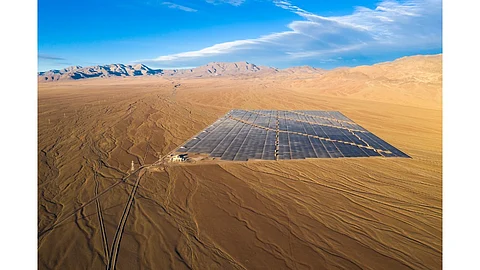

Chile has seen renewable energy curtailment rising 323% between 2022 and 2024 due to rapid solar growth
Battery storage and near-term transmission improvements are key to reducing curtailment before 2030, says Aurora Energy Research
After 2031, curtailment relief for solar depends on the 3 GW Kimal–Lo Aguirre HVDC line completion
If the HVDC project is delayed by 3 years, it could have financial implications for solar projects in the north of Chile
Rapid solar growth in Northern Chile triggered a more than 3-fold (323%) increase in renewable energy curtailment between 2022 and 2024, according to Aurora Energy Research. The surge is attributed to grid congestion caused by limited transmission capacity and excess solar generation during daylight hours.
Chile needs to invest in battery energy storage system (BESS) development and transmission upgrades as these are vital to reduce short-term curtailment, according to Aurora analysts.
As storage and transmission infrastructure expands in the late 2020s and early 2030s, the country will see curtailments easing system-wide. Power market analyst Aurora forecasts that up to 5 GW of battery storage could significantly reduce renewable energy curtailment in Chile through 2030.
After 2031, curtailment mitigation will hinge on expanding transmission infrastructure, particularly the 3 GW Kimal–Lo Aguirre High-Voltage Direct Current (HVDC) line, slated for completion by 2032. This project, alongside other planned grid upgrades, will facilitate the flow of surplus solar energy from northern Chile to demand centers like Santiago, it adds.
Chile generated a record 42% of its electricity from wind and solar in 2024, according to Ember. Solar accounted for 21% of the country’s power generation. Under its Energy Transition Law of December 2024, Chile has prioritized electricity transmission works to connect renewable energy projects.
However, Aurora models a hypothetical 3-year delay in completing the Kimal–Lo Aguirre line – expected in 2035. This, it explains, would worsen grid congestion and significantly reduce revenues for solar projects in northern Chile.
For instance, a project starting in 2026 could face a 15% drop in the net present value of revenues, as the delay postpones the alignment of solar capture prices with those in the Central region, explains Aurora. This situation would, of course, work for Central solar assets.
“Overall, our modelling shows that Chile’s curtailment challenges will reach their peak in 2027. The effects of BESS and transmission upgrades will take time to manifest in the system. By the early 2030s, we expect more batteries and transmission upgrades to be connected, which will reduce congestion and the need for curtailment,” said Aurora’s Research Senior Associate, Marvin Gareiss.
